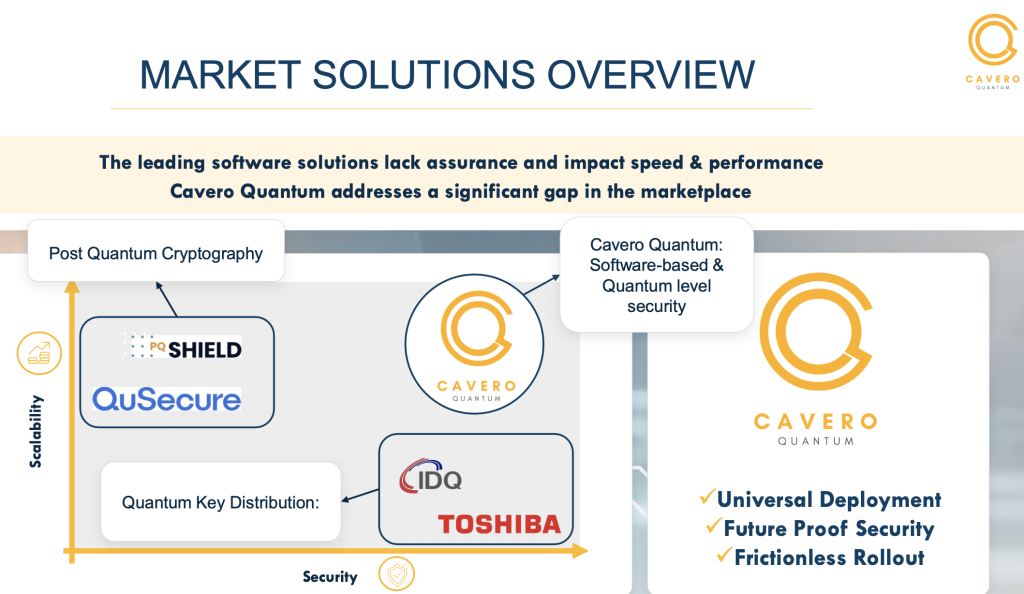TADSummit is never afraid of including workshops that may not appear that relevant at first sight. Sometimes technologies leapforward, like AI, and quantum computing could be another. Examples of other workshops:
- Design Thinking & Effectuation by Philippe Vayssac, CIO, Groupama.
- Web 3 by a number of presenters including David Dias, Ben Parsons, Dean Bubley, and Paulo Chainho.
- Privacy by Simon Woodhead. Though the presentation title was ‘Securing my Space Genitalia’!
Back in 2021 Craig Richards gave a workshop entitled, My Two Bits on Qubits. If Kevin’s presentation whets your appetite on quantum computing, Craig’s will provide some great background. It covers:
- What is Quantum Computing
- The huge potential for Quantum Computing
- How is Quantum Computing Different
- What problems can Quantum Computing Solve
- Quantum Computing is real and it is here now!
- Quantum Computing Realities
- Applications in Communications
Back to Kevin Graham, he has recently moved to Cavero Quantum, after a long and storied career in programmable communication. His slides are here.
Quantum Computing will at some point solve the cryptographic keys we use today. Some governments are already storing vast quantities of encrypted data, in the hope that day comes sooner, rather than later. Is China working on quantum computing? Of course. The US has set the date of 2030 to initiate Quantum Secure policies.
QKD (Quantum Key Distribution) is available from telcos in a number of markets, like Korea and UK. BT has conducted several trials of QKD technology, including:
- World’s first QKD trial over hollow core fiber: BT conducted the world’s first trial of QKD over hollow core fiber cable at its BT Labs in Ipswich.
- UKQNtel: BT collaborated with the Quantum Communications Hub to demonstrate the integration of QKD technology over standard optical fiber.
- London Quantum-Secured Metro Network: BT partnered with Toshiba and EY to launch the world’s first commercial trial of a quantum-secured metro network in London. The network connects customers across London, allowing them to securely transmit data between locations.
For the mobile industry the security around the SIM is critical. I ask Kevin a question on quantum safe SIMs. The challenge is the limited real estate on the SIM. And this is where one of Cavero Quantum’s USPs comes in then play. More on that in a minute.
As organizations move to hybrid models, that is introducing quantum safe within existing traditional environment both within an organization, and across organizations / countries. There are many concerns, it’s a multilayer stack, we’re at the point of knowing its an issue, however, lack a clarity of vision. I think of it as like global warming, we know its coming, have some targets and dates. But there still appears to be a yawning gap on many fronts,
Kevin maps out the landscape, there are 2 quantum safe approaches:
- Quantum Key Distribution which required specialized hardware.
- PQC (Post Quantum Cryptography), which came out of NIST (National Institute of Standards and Technology) and is software based. Though concerns exist on its vulnerability.
This is where Cavero comes in, with their third approach, a protocol based on the latest in random number probability theory, for quantum safe key creation. It can be deployed today, which is interesting, and changes the game on the evolution to quantum safe.
- A new lightweight protocol, a cryptographic key and an authentication layer
- Not susceptible to quantum ‘cracking’ because it is not based upon a ‘hard maths’ problem
- Symmetric key brings many advantages over alternatives
- Can be used both today (replacing code) and tomorrow (developing new
applications) - Deploying QKD security at software scale
Mathematicians, NIST, and the labs of many governments and large organizations will need to paw over this. Innovation is key to finding solutions to Quantum Safe problem. The Cavero team and Kevin’s contact details are in the slides.


One thought on “Is Security in Programmable Communications ready for the post Quantum Era? Kevin Graham, Cavero Quantum”
Comments are closed.